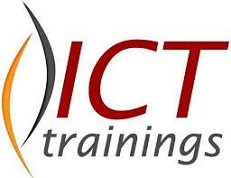In the ever-evolving realm of web development, full-stack developers stand out as versatile professionals with unique skills. But what exactly is a full stack developer, and why is their demand soaring in the digital landscape?
Unveiling Full Stack Web Development
Full stack development is akin to being a maestro orchestrating a digital symphony. It involves mastering a website’s front and back ends, seamlessly blending database intricacies, user interface finesse, and client-oriented communication. Full-stack developers are the architects responsible for the holistic development and maintenance of digital entities like apps and web pages.
Are you enticed by the prospect of diving into full-stack development? Dive into our comprehensive guide on becoming a full-stack developer, or explore our full-stack coding boot camp, where you can acquire essential skills in just 12 weeks while crafting a robust project portfolio for potential employers.
Delving into the Full Stack Developer’s Role
Picture a digital virtuoso who effortlessly traverses the realms of both front-end and back-end web development. Full-stack developers wear many hats, handling many responsibilities in building and maintaining digital entities. Their success hinges on a unique fusion of technical programming prowess and effective client communication.
Before embarking on their multifaceted journey, aspiring full-stack developers must first grasp the dichotomy between front-end and back-end development. This entails delving into both domains to balance their responsibilities harmoniously.
Front End Development: Crafting User Experiences
Front-end developers are the artists of the digital canvas, shaping a website or application’s user-facing elements. From user interface (UI) design to ensuring browser compatibility, they create the immersive experience users encounter while navigating a site or app. Languages like JavaScript, HTML, and CSS serve as their tools to breathe life into projects, making them engaging and interactive.
Back-End Development: The Digital Foundation
On the flip side, back-end developers operate backstage, maintaining the digital foundation of a website or application. Much like a stage crew at a concert, they oversee vital components such as database maintenance and debugging. Collaboration with front-end developers for usability testing and fortifying foundational code is also part of their repertoire.
Deciphering the Full Stack Developer’s Toolkit
A full-stack developer’s toolkit amalgamates diverse skills, often requiring proficiency in several programming languages. Let’s unveil a few essential skills and languages crucial for aspiring full-stack developers:
Python: Renowned for its versatility, Python is a staple in modern back-end web development. Its simplicity and support for various programming styles make it highly sought after.
JavaScript: A dynamic powerhouse, JavaScript ranks as a top coding skill in full-stack development. Its applications range from complex style declarations to supporting high-level math calculations.
HTML: The backbone of web development, HTML (HyperText Markup Language) links web pages and informs browsers on displaying elements through tags.
CSS: Cascading Style Sheets (CSS) complements HTML, adding aesthetic elements to web pages. It’s crucial for creating visually pleasing designs.
SQL: In back-end development, Structured Query Language (SQL) manages and updates records, playing a vital role in database-oriented literacy.
Rust: Praised for speed and memory safety, Rust is a beloved programming language that enhances web page performance and versatility.
Java: A versatile language, Java is a powerhouse in back-end web development, finding applications across various software types.
Web Architecture: Understanding website design’s technical, functional, and visual components is crucial for full-stack developers.
Critical Thinking: High-level problem-solving skills are necessary in web development, requiring developers to navigate challenges with a comprehensive, solution-oriented mindset.
Patience: In the dynamic world of web development, patience complements critical thinking, allowing developers to troubleshoot and experiment effectively.
Communication: A crucial soft skill, effective communication is vital for full-stack developers. Collaborating with clients, coders, and other departments demands clarity and transparency.

